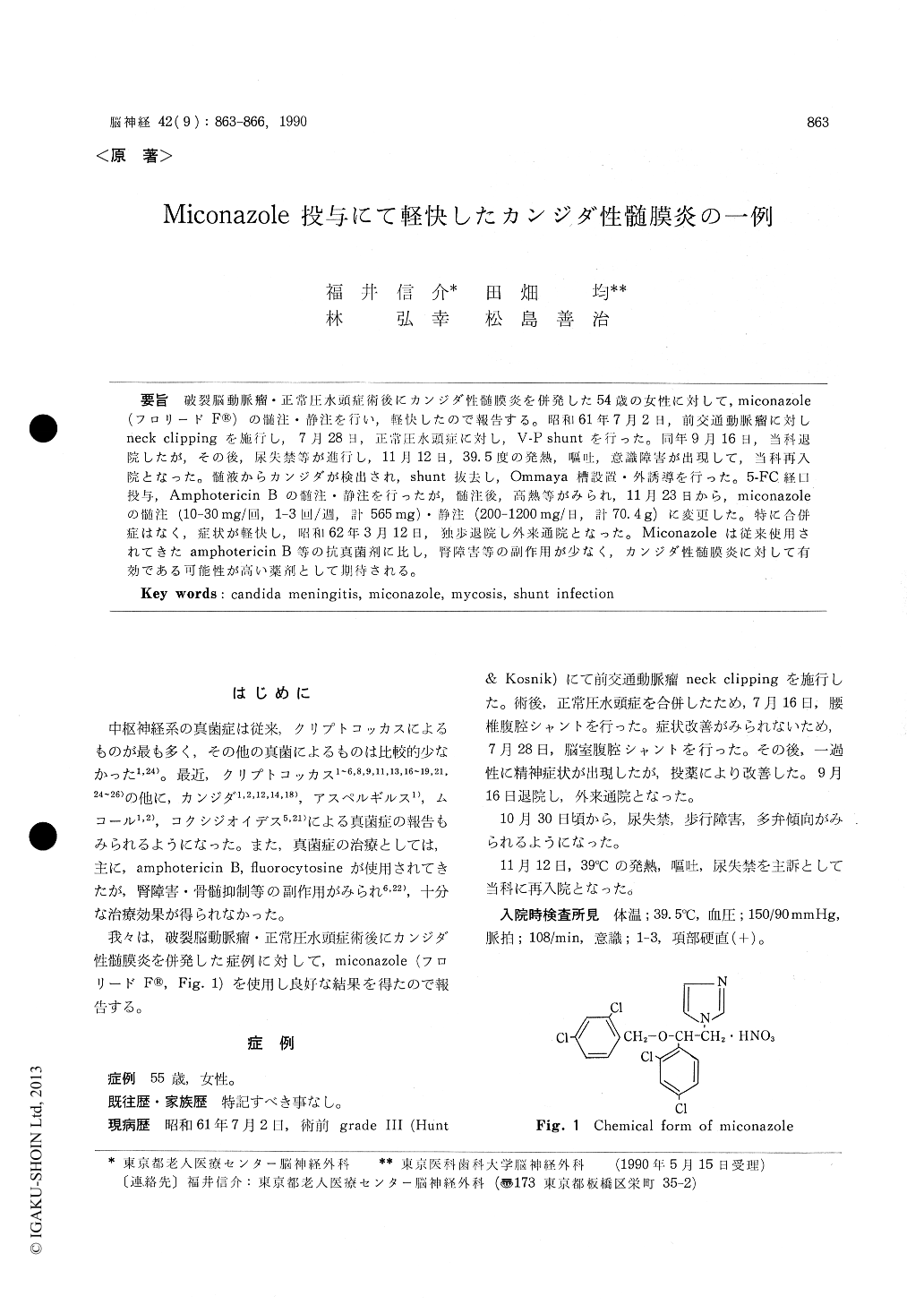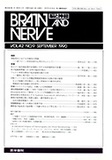Japanese
English
- 有料閲覧
- Abstract 文献概要
- 1ページ目 Look Inside
破裂脳動脈瘤・正常圧水頭症術後にカンジダ性髄膜炎を併発した54歳の女性に対して,miconazole(フロリード®)の髄注・静注を行い,軽快したので報告する。昭和61年7月2日,前交通動脈瘤に対しneck clippingを施行し,7月28日,正常圧水頭症に対し,V-P shuntを行った。同年9月16日,当科退院したが,その後,尿失禁等が進行し,11月12日,39.5度の発熱,嘔吐,意識障害が出現して,当科再入院となった。髄液からカンジダが検出され,shunt抜去し,Ommaya槽設置・外誘導を行った。5—FC経口投与,Amphotericin Bの髄注・静注を行ったが,髄注後,高熱等がみられ,11月23日から,miconazoleの髄注(10-30mg/回,1-3回/週,計565mg)・静注(200-1200mg/日,計70.4g)に変更した。特に合併症はなく,症状が軽快し,昭和62年3月12日,独歩退院し外来通院となった。Miconazoleは従来使用されてきたamphotericin B等の抗真菌剤に比し,腎障害等の副作用が少なく,カンジダ性髄膜炎に対して有効である可能性が高い薬剤として期待される。
This paper presents a case of successful treatment of candida meningitis with miconazole. A 55-year-old woman was admitted due to high fever, vomiting and urinary incontinence on November 11, 1986. Four months prior to this episode, she had been treated for a ruptured aneurysm with neckclipping and V-P shunt for NPH. Candida albicans was cultured from her CSF. The shunt system was immediately removed and an Ommaya's reservoir was installed for external drainage and intrathecal administrations. Combination therapy (amphotericin B and flucytosine) was initiated. However, it was discontinued after ten days because of high fever and chills after intrathecal injection of amphotericin B. Treatment with miconazole intrathecally (10-90 mg/week, total 565 mg) and intravenously (200-1200 mg/day, total 70.4 g) was begun on November 23. Clinical and CSF findings were improved soon. No side effect of miconazole was observed. After V-P shunt revision, she was discharged without neurological deficit on March 12, 1987.
Reports of mycosis in central nervous system are recently increasing, especially for candidosis. Cryptococcosis is noted frequently as an opportunistic infection of AIDS. The administration of amphotericin B and flucytosine has been the main therapy for mycotic meningitis. Unfortunately, however, Amphotericin B has many toxic effects, including renal dysfunction, and flucytosine can induce the emergent resistance.
Miconazole has been used to successfully treat cryptococcosis, aspergillosis or coccidioidosis, and was effective in our case of candida meningitis. Few side effects have been reported with its use. The intrathecal injection of miconazole is recommended for meningitis, because the drug is taken up minimally into CSF space after intravenous administration. To the best of our knowledge, this is the second case report of candida shunt infection successfully treated with miconazole. Miconazole is expected to be an alternative anti-fungal drug to amphotericin B or flucytosine.

Copyright © 1990, Igaku-Shoin Ltd. All rights reserved.


